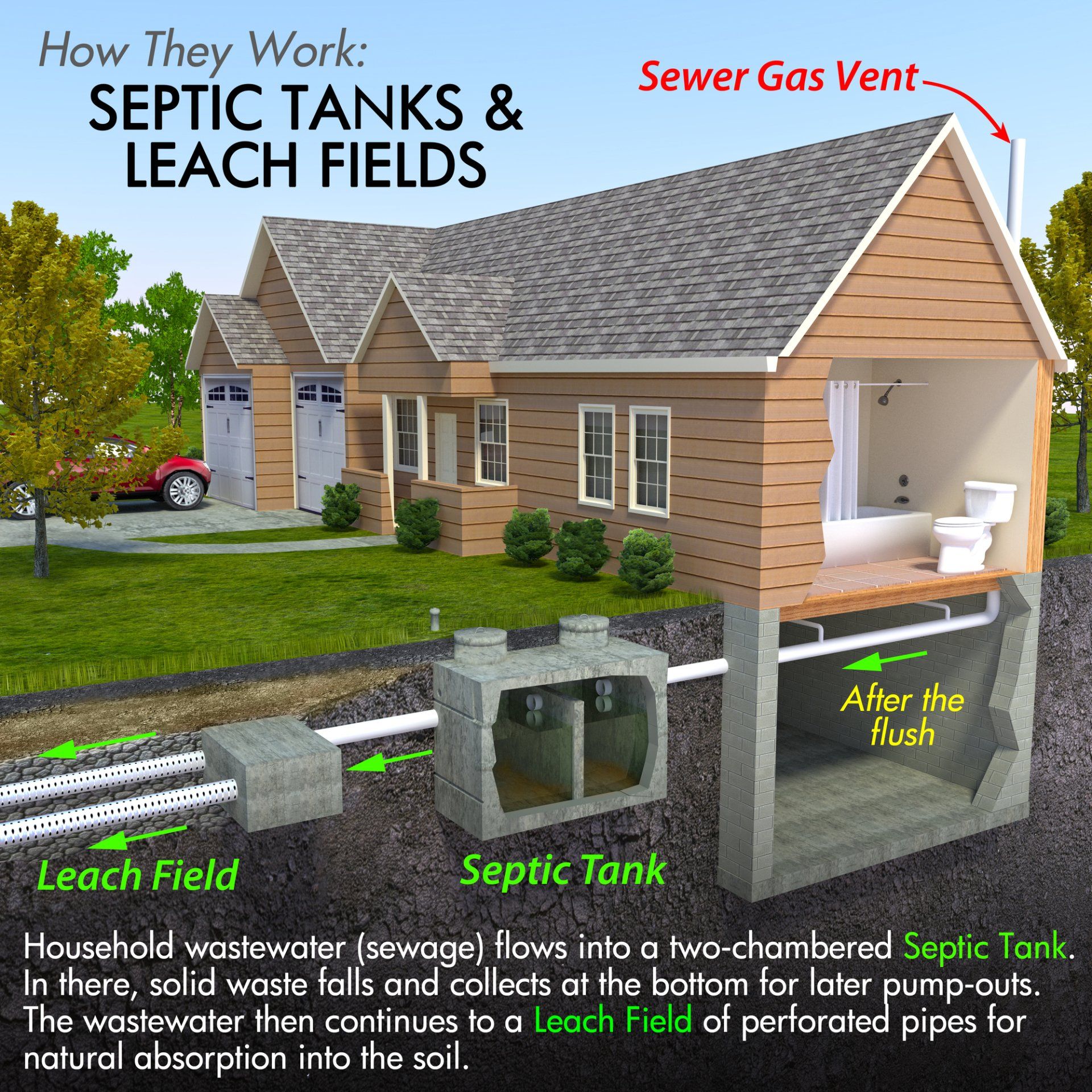Professional services
Septic Pumping & Cleaning
We can help with every type of installation, maintenance and repair.
Maintenance and Minor Repairs
We can help with every type of installation, maintenance and repair.
Portable Toilet Rental Services
We can help with every type of installation, maintenance and repair.
How works a septic tank?
A septic tank is an underground wastewater treatment system commonly used in areas without access to a centralized sewer system. It is designed to collect, treat, and dispose of household wastewater in a safe and environmentally friendly manner. Here's a general overview of how a septic tank works:
Collection of Wastewater: All the wastewater from toilets, sinks, showers, and other drains in a property flows into the septic tank through a network of pipes. This wastewater includes both solids (such as human waste and toilet paper) and liquids (such as soaps and detergents).
Separation and Settling: Once inside the septic tank, the wastewater goes through a process of separation and settling. The tank is divided into two compartments, allowing for a more efficient treatment process. Solid waste and heavier particles settle at the bottom of the tank, forming a layer of sludge, while lighter materials float to the top, forming a layer of scum. Clearer wastewater, known as effluent, remains in the middle.
Anaerobic Digestion: Bacteria present in the septic tank break down the organic matter in the sludge through a process called anaerobic digestion. This process occurs in the absence of oxygen and converts the solids into gases (such as methane) and a partially treated liquid.
Effluent Treatment: The partially treated effluent flows out of the septic tank and into the drain field (also known as leach field or absorption field). The drain field consists of a network of perforated pipes or chambers buried in gravel or soil. The effluent is released into the drain field, where it percolates through the soil. The soil acts as a natural filter, further treating the wastewater by removing harmful bacteria, viruses, and other contaminants.
Soil Filtration and Absorption: As the effluent passes through the soil, it undergoes further treatment through processes like biological decomposition and filtration. The soil helps to remove remaining impurities and pathogens, allowing the treated water to gradually enter the groundwater or be absorbed by plant roots.
It's important to note that septic tanks require regular maintenance, including periodic pumping to remove accumulated sludge and inspection to ensure proper functioning. Neglecting maintenance can lead to issues such as blockages, backups, and groundwater contamination. Consulting with a professional septic tank service provider is recommended to ensure the system's optimal performance and longevity.
Professional services
Septic Pumping & Cleaning
We can help with every type of installation, maintenance and repair.
Maintenance and Minor Repairs
We can help with every type of installation, maintenance and repair.
Portable Toilet Rental Services
We can help with every type of installation, maintenance and repair.
How works a septic tank?
A septic tank is an underground wastewater treatment system commonly used in areas without access to a centralized sewer system. It is designed to collect, treat, and dispose of household wastewater in a safe and environmentally friendly manner. Here's a general overview of how a septic tank works:
Collection of Wastewater: All the wastewater from toilets, sinks, showers, and other drains in a property flows into the septic tank through a network of pipes. This wastewater includes both solids (such as human waste and toilet paper) and liquids (such as soaps and detergents).
Separation and Settling: Once inside the septic tank, the wastewater goes through a process of separation and settling. The tank is divided into two compartments, allowing for a more efficient treatment process. Solid waste and heavier particles settle at the bottom of the tank, forming a layer of sludge, while lighter materials float to the top, forming a layer of scum. Clearer wastewater, known as effluent, remains in the middle.
Anaerobic Digestion: Bacteria present in the septic tank break down the organic matter in the sludge through a process called anaerobic digestion. This process occurs in the absence of oxygen and converts the solids into gases (such as methane) and a partially treated liquid.
Effluent Treatment: The partially treated effluent flows out of the septic tank and into the drain field (also known as leach field or absorption field). The drain field consists of a network of perforated pipes or chambers buried in gravel or soil. The effluent is released into the drain field, where it percolates through the soil. The soil acts as a natural filter, further treating the wastewater by removing harmful bacteria, viruses, and other contaminants.
Soil Filtration and Absorption: As the effluent passes through the soil, it undergoes further treatment through processes like biological decomposition and filtration. The soil helps to remove remaining impurities and pathogens, allowing the treated water to gradually enter the groundwater or be absorbed by plant roots.
It's important to note that septic tanks require regular maintenance, including periodic pumping to remove accumulated sludge and inspection to ensure proper functioning. Neglecting maintenance can lead to issues such as blockages, backups, and groundwater contamination. Consulting with a professional septic tank service provider is recommended to ensure the system's optimal performance and longevity.




